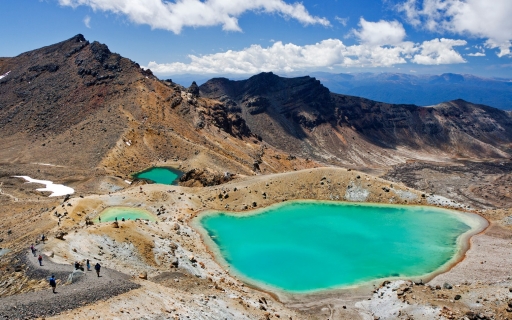National Park Temperatures: Monthly Averages and Year-Round Insights
On this page, weâll explore National Parkâs temperature statistics in detail, including day and night variations and monthly averages. Weâll also compare the annual temperature to other cities in New Zealand.
Monthly Temperature Averages
National Park experiences balanced seasonal shifts, with noticeable but moderate temperature variations. Typically, maximum daytime temperatures range from a pleasant 21ÂḞC in February to a cold 10ÂḞC in the coolest month, July. Nights are cooler, with temperatures generally dropping to 2ÂḞC, particularly during the colder months.
The chart below illustrates the average maximum day and minimum night temperatures in National Park by month:
Typically, the coolest time of day is between 4 AM and 6 AM, while the hottest time occurs around 3 PM, when the sunâs heating effect is strongest. February, the cityâs warmest month, experiences 205 hours of sunshine.
The chart below shows the average temperature throughout the year:
July, the cityâs coldest month, sees about 169 mm of rainfall spread over roughly 20 days. It records 120 hours of sunshine of sunshine.
Annual Temperatures in New Zealand Compared
The map below shows the annual temperature across New Zealand. You can also select the different months in case you are interested in a specific month.
 very warm
very warm
 warm
warm
 pleasant
pleasant
 moderate
moderate
 cold
cold
 very cold
very cold
National Park Temperatures Compared World Wide
National Parkâs average annual maximum temperature is 15ÂḞC. Letâs compare this with some popular tourist destinations:
In Barcelona, Spain, the average annual temperature is around 21ÂḞC, resulting in warm summers and mild winters throughout the year.
Meanwhile, Queenstown, New Zealand, the average annual temperature is significantly lower at 10ÂḞC, with mild summers and cold winters.
In Shanghai, China, the annual average temperature is 21ÂḞC, offering warm summers and mild winters.
In Brisbane, Australia, the average annual temperature is 26ÂḞC, making it warmer than Sydney.
How are these Temperatures Measured?
Generally, temperature data depicting climate is usually given over a 30-year average in order to reduce short-term fluctuations and reveal better long-term trends in climate conditions.
This temperature data is taken from land-based thermometers, ocean buoys, ships, and satellites. These measurements are transmitted to weather stations and climate centers around the globe where they are processed, averaged, and analyzed in order to monitor the trends and create climate models.
Effects of Temperature on Weather and Climate
Temperature variations influence precipitation patterns in Amsterdam:
Rainfall: Warm air holds more moisture, leading to heavier rain during warmer months. However, precipitation is generally moderate year-round.
Snow: Occasional snowfall occurs in winter, though it rarely lasts very long.
For more detailed information about National Parkâs weather, including monthly rainfall, sunshine hours, and humidity levels, visit our National Park climate page.
Current temperature in National Park
overcast and rain
partly cloudy and chance of slight rain
broken clouds and rain




